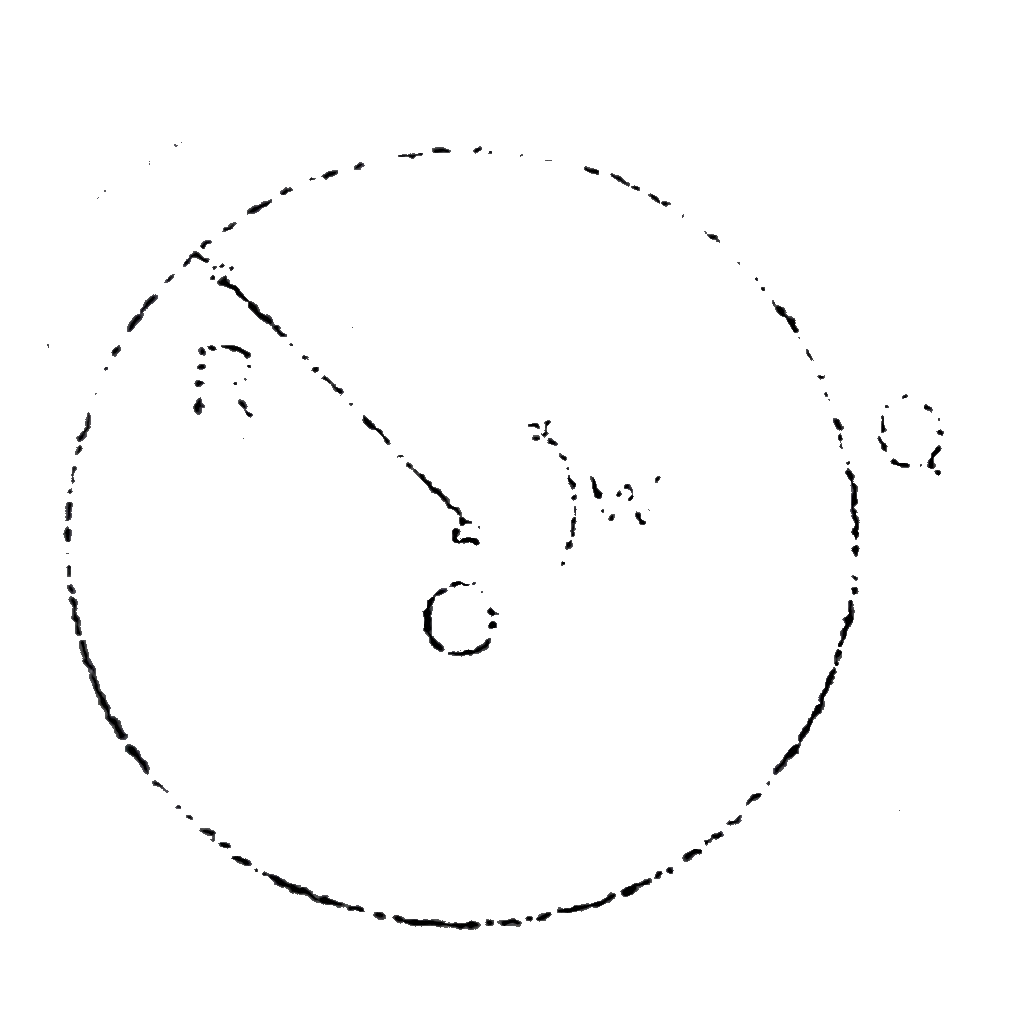A uniformly charged ring having linear charge density λ is rotating in X-Y plane with uniform angular speed o about its own axis inside the uniform magnetic field B along the y direction. The magnitude of maximum torque acting on the ring about its diameter is
λωBπR3
λωBπR32
2λωBπR3
3λωBπR3
To find the magnitude of the maximum torque acting on a uniformly charged ring rotating in a magnetic field, we can follow these steps:
Step 1: Define the parameters
Let:
- Linear charge density of the ring = λ
- Radius of the ring = r
- Angular speed of the ring = ω
- Magnetic field strength = B
Step 2: Calculate the total charge on the ring
The total charge Q on the ring can be expressed as:
Q=λ⋅(2πr)
where 2πr is the circumference of the ring.
Step 3: Determine the current flowing in the ring
The current I flowing in the ring due to the rotation of the charge can be calculated using the formula:
I=QT
where T is the time period of one complete rotation. The time period T can be expressed as:
T=2πω
Substituting Q into the current formula gives:
I=λ⋅(2πr)2πω=λ⋅r⋅ω
Step 4: Calculate the magnetic moment m
The magnetic moment m of the ring can be calculated using the formula:
m=I⋅A
where A is the area enclosed by the ring. For a circular ring, the area A is given by:
A=πr2
Thus, substituting for I and A:
m=(λ⋅r⋅ω)⋅(πr2)=λ⋅ω⋅πr3
Step 5: Calculate the torque τ
The torque τ experienced by the ring in a magnetic field is given by:
τ=m×B×sin(θ)
For maximum torque, the angle θ between the magnetic moment and the magnetic field should be 90∘ (i.e., sin(90∘)=1). Therefore, the maximum torque is:
τmax=m⋅B=(λ⋅ω⋅πr3)⋅B
Thus, we can write:
τmax=λ⋅ω⋅πr3⋅B
Final Answer
The magnitude of the maximum torque acting on the ring about its diameter is:
τmax=λ⋅ω⋅πr3⋅B
---
Let:
- Linear charge density of the ring = λ
- Radius of the ring = r
- Angular speed of the ring = ω
- Magnetic field strength = B
The total charge Q on the ring can be expressed as:
Q=λ⋅(2πr)
where 2πr is the circumference of the ring.
The current I flowing in the ring due to the rotation of the charge can be calculated using the formula:
I=QT
where T is the time period of one complete rotation. The time period T can be expressed as:
T=2πω
Substituting Q into the current formula gives:
I=λ⋅(2πr)2πω=λ⋅r⋅ω
The magnetic moment m of the ring can be calculated using the formula:
m=I⋅A
where A is the area enclosed by the ring. For a circular ring, the area A is given by:
A=πr2
Thus, substituting for I and A:
m=(λ⋅r⋅ω)⋅(πr2)=λ⋅ω⋅πr3
The torque τ experienced by the ring in a magnetic field is given by:
τ=m×B×sin(θ)
For maximum torque, the angle θ between the magnetic moment and the magnetic field should be 90∘ (i.e., sin(90∘)=1). Therefore, the maximum torque is:
τmax=m⋅B=(λ⋅ω⋅πr3)⋅B
Thus, we can write:
τmax=λ⋅ω⋅πr3⋅B
The magnitude of the maximum torque acting on the ring about its diameter is:
τmax=λ⋅ω⋅πr3⋅B
Similar Questions
There is a ring of radius r having linear charge density λ and rotating with a uniform angular velocity ω. the magnetic field produced by this ring at its own centre would be
View SolutionA conducting ring of radius r having charge q is rotating with angular velocity ω about its axes. Find the magnetic field at the centre of the ring.

View Solution
Knowledge Check
A rod of length l rotates with a uniform angular velocity omega about its perpendicular bisector. A uniform magnetic field B exists parallel to the axis of rotation. The potential difference between the two ends of the lrod is
ABl2ω2BzeroC(Bl2ω8)D2Bl2ω
A conducting ring of radius r having charge q is rotating with angular velocity ω about its axes. Find the magnetic field at the centre of the ring.

View SolutionA conducting loop rotates with constant angular velocity about its fixed diameter in a uniform magnetic field, whose direction is perpendicular to that fixed diameter.
View SolutionA conducting loop rotates with constant angular velocity about its fixed diameter in a uniform magnetic field, whose direction is perpendicular to that fixed diameter.
View SolutionWhen a 'j' shaped conducting rod is rotating in its own plane with constant angular velocity ω about one of its ends P in a uniform magnetic field →B ( directed normally into the plane of paper ) the magnitude of emf induced across it will be

View SolutionA non-conducting disc having unifrom positive charge Q, is rotating about its axis with unifrom angular velocity ω.The magnetic field at the centre of the disc is.

View SolutionA rod of length l rotates with a uniform angular velocity omega about its perpendicular bisector. A uniform magnetic field B exists parallel to the axis of rotation. The potential difference between the two ends of the lrod is
View SolutionA rod of length l rotates with a small but uniform angular velocity ω about its perpendicular bisector. A uniform magnetic field B exists parallel to the axis of rotation. The potential difference between the centre of the rod and an end is
View Solution
